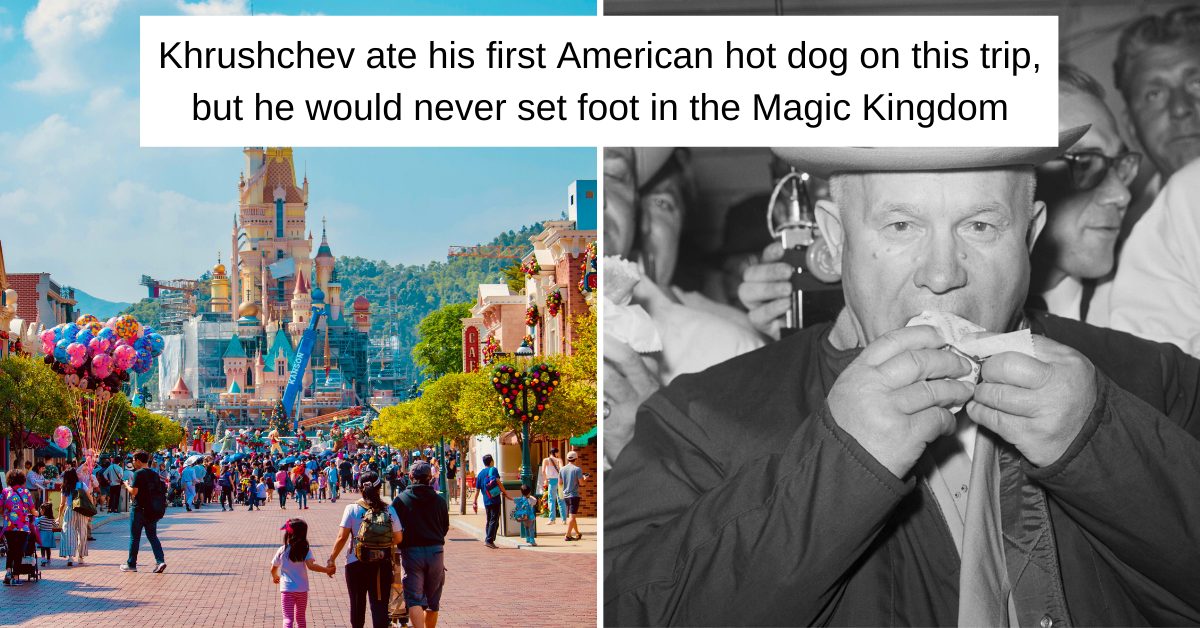Nikita Khrushchev became the first Soviet leader to visit America. But there was one place he couldn’t go…Disneyland.
Why? Well, it was all down to a very different type of “Red Menace.”
Khrushchev’s trip to America
The idea of a Communist meeting Mickey Mouse is surreal enough. And why Khrushchev and wife Nina wanted to see the House of Mouse in the first place isn’t clear.
Nevertheless, arrangements were made. Not that Russia’s First Secretary was in the U.S. on a pleasure trip. He and Nina toured the country between the 15th–27th of September, 1959. Waiting for them at the end was President Eisenhower, who’d called a summit to discuss tensions in Berlin. The notorious Wall would go up a couple of years later.
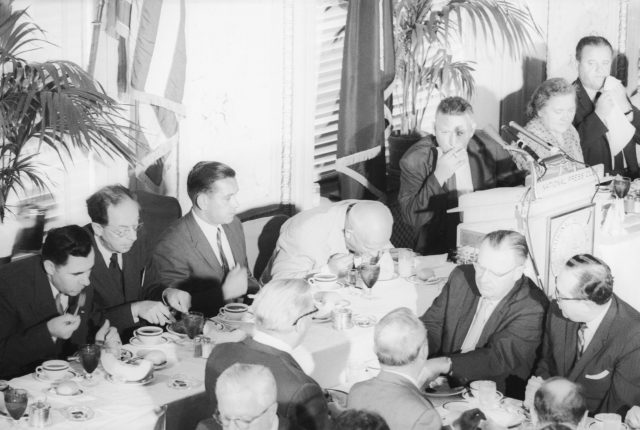
Before that happened, however, Khrushchev wanted to take in Hollywood. As Smithsonian magazine writes, he was far from ready for his close-up. They describe him — for better or worse — as having “a mole on his cheek, a gap in his teeth and a potbelly that made him look like a man shoplifting a watermelon.”
He may not have had the looks, but reportedly, Khrushchev amused onlookers with his attention-grabbing behavior. Maybe he did belong in Tinseltown after all. When criticisms came, he brushed them off with wise-cracking confidence.
20th Century Fox was the centerpiece of this bizarre display. He arrived on the set of the musical Can-Can, where he met stars such as Shirley MacLaine. She wanted to dance, he didn’t. The studio appeared happy with the publicity.
A lavish lunch was put on at the Café de Paris, where Nikita and Nina rubbed shoulders with the likes of Frank Sinatra and David Niven. The venue was packed to the rafters with A-list talent.
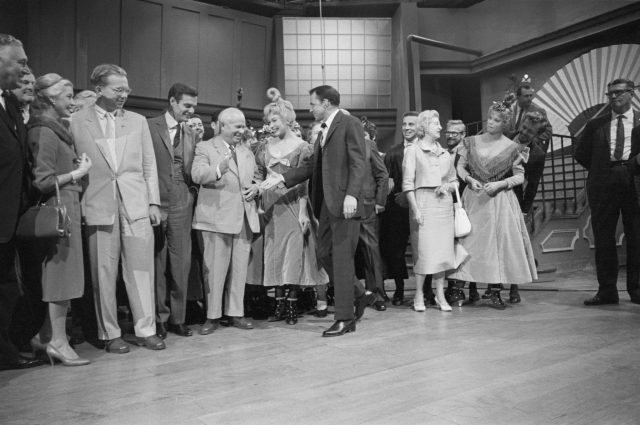
Marilyn Monroe was there, at the behest of bigwigs. Her other half, left-wing playwright Arthur Miller, had to stay at home. But Marilyn showed up in all her glory, receiving an enthusiastic response from the Russian. If reports are to be believed, she hadn’t known who he was till recently.
Smithsonian magazine quotes her maid Lena Pepitone: “They told Marilyn that in Russia, America meant two things, Coca-Cola and Marilyn Monroe,” Pepitone wrote in her memoirs. “She loved hearing that and agreed to go.”
One person who wasn’t exactly thrilled to see Khrushchev was Spyros P. Skouras, President of 20th Century Fox. During a public address, he was keen to highlight his status as a Greek immigrant made good under capitalism.
Khrushchev, who’d famously talked about burying capitalism, was having none of it. “If you want to go on with the arms race, very well,” he said at one point. “We accept that challenge.”
Khrushchev barred from the Magic Kingdom
Things appeared light-hearted enough, though international tensions bubbled under the surface. A crunch point came when word got out the Disneyland visit had been canceled.
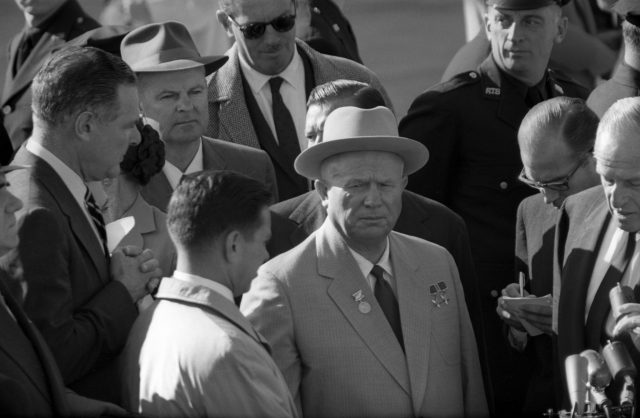
What led to the change of heart? A tomato. Someone threw the squishy red symbol of resistance at Khrushchev’s car. It didn’t hit its target but splatted on the vehicle of William Parker, LA’s Chief of Police.
This made Parker worried about the high level of security involved. A Geiger counter was apparently used to test Khrushchev’s lunch. Was it worth the risk of endangering his life in the midst of Mickey, Donald Duck, Goofy, and the gang?
Khrushchev was not impressed. Reportedly throwing a tantrum, he asked: “Then what must I do? … Is there an epidemic of cholera there or something? Or have gangsters taken hold of the place that can destroy me?” amongst other angry observations.
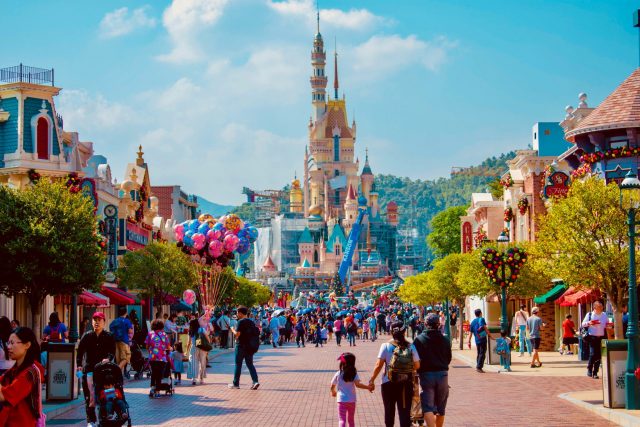
As noted in contemporaneous reporting in the New York Times, Sinatra offered to buddy up with Niven and take the Khrushchevs to the Magic Kingdom. This situation never transpired, though a fictionalized account where it happened is surely sitting in some Hollywood producer’s slush pile.
The Communist premier later attended the summit at Camp David, his Disneyland disaster a footnote in world history. A far greater drama loomed in the shape of the Cuban Missile Crisis of 1962.
More from us: When Audrey Hepburn Danced To Help The Dutch Resistance
BBC History writes his campaign of “de-Stalinisation” led to attempts “to improve Soviet living standards and allow greater freedom in cultural and intellectual life.” Several years later, he relinquished the top job, at odds with the Kremlin firmament.
He was a controversial figure in America. But when he did set foot on U.S. soil, Nikita Khrushchev became a true Hollywood scene-stealer.
